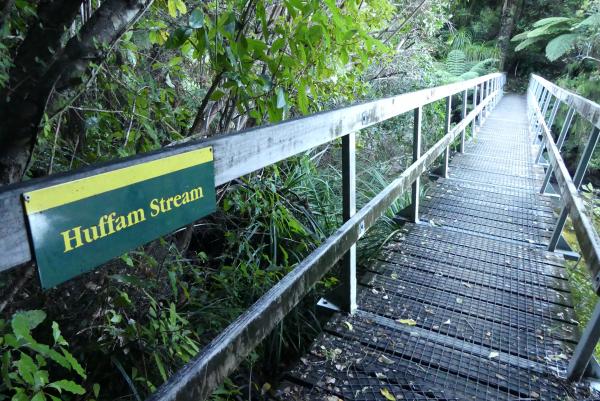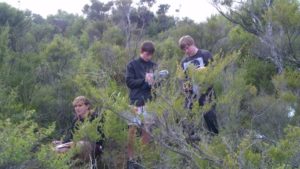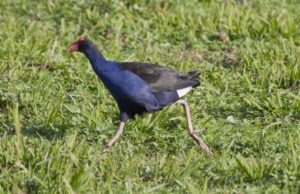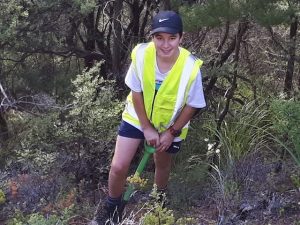
Timothy Huffam decided to migrate to New Zealand after his wife died and he learned of Darwin’s theory of evolution which shifted his understanding of religion and excited his quest for adventure. He, and his four sons Timotheus, Frederick, Richard and Gerard arrived in Nelson in April 1869. The family was well versed in brewing (a huge grape vine still growing at Hadfield Clearing is said to have been brought to New Zealand by Timothy Huffam) and boat building. They soon leased, and eventually owned, a 50 ha block at Bark Bay and moved there to take advantage of the timber that clothed the hills behind.
They spent the first months cutting firewood, building a house and cutting hop poles (narrow sticks up which hops were trained before strings were used) from the kanuka that grew on the formerly cleared lower slopes and sandflats. The remnants of these kanuka are seen along the track today, and are among the largest in the Park. Beech trees were cut for firewood and boat-building timber. The bark was taken to a mill at Awaroa and ground into a powder that was used as a tanning agent for fishing nets in Wellington. As a result of traders calling to collect bark, even before the Huffams settled there, the bay was named Bark Bay.
The house site utilised a large flat granite rock as a table, and it is present today in the clearing where the house was located along with some early photographs of their lives: a unique opportunity to imagine them going about their daily routines of subsistence living – milking goats, smoking fish, building boats, and catching forest birds. The house was surrounded by Japanese Cedar trees (Cryptomeria japonica), now regarded as historic trees. Also planted to shelter their gardens and orchard were pines ( P. pinaster). After they cleared the bush from the slope behind for their goats and then left Bark Bay, these pines spread into a large forest and these trees are currently being poisoned by the Abel Tasman Birdsong Trust, Project Janszoon and DOC so that the bush can return.
The Huffams were enterprising people. They milled rimu at Awaroa, cut planks using the sawpit method and rafted the timbers to Bark Bay for their buildings and boats. They milled local tree ferns (which they called ‘blackboys’) to make other buildings. A smoke house smoked their fish which they sold in Motueka, and they kept goats for milk and cheese. They lived off the bush too and there are diary records of many pigeons and other birds being eaten. The family also inherited a tradition of gardening and their produce, including cherries, grapes and apples, was famous among settlers along the coast. One son married a daughter of William Gibbs from Totaranui and lived at Anatakapau.
Timotheus married and left home first, then Frederick and Richard. Gerard Huffam and his father were still living at Bark Bay in 1890 when they finally purchased the land, but they moved away soon after.
Timotheus, usually called by his second name, Blake, opened a business in Nelson and by 1889 was sufficiently well established to advertise in the Colonist that, ‘Huffam’s of Hardy Street’ was the place for toys and others goods. Later he opened a music shop, and he was one of the people responsible for the establishment of the Nelson School of Music. Old Timothy died in 1893 and in 1904 Gerard sold the Bark Bay property.



